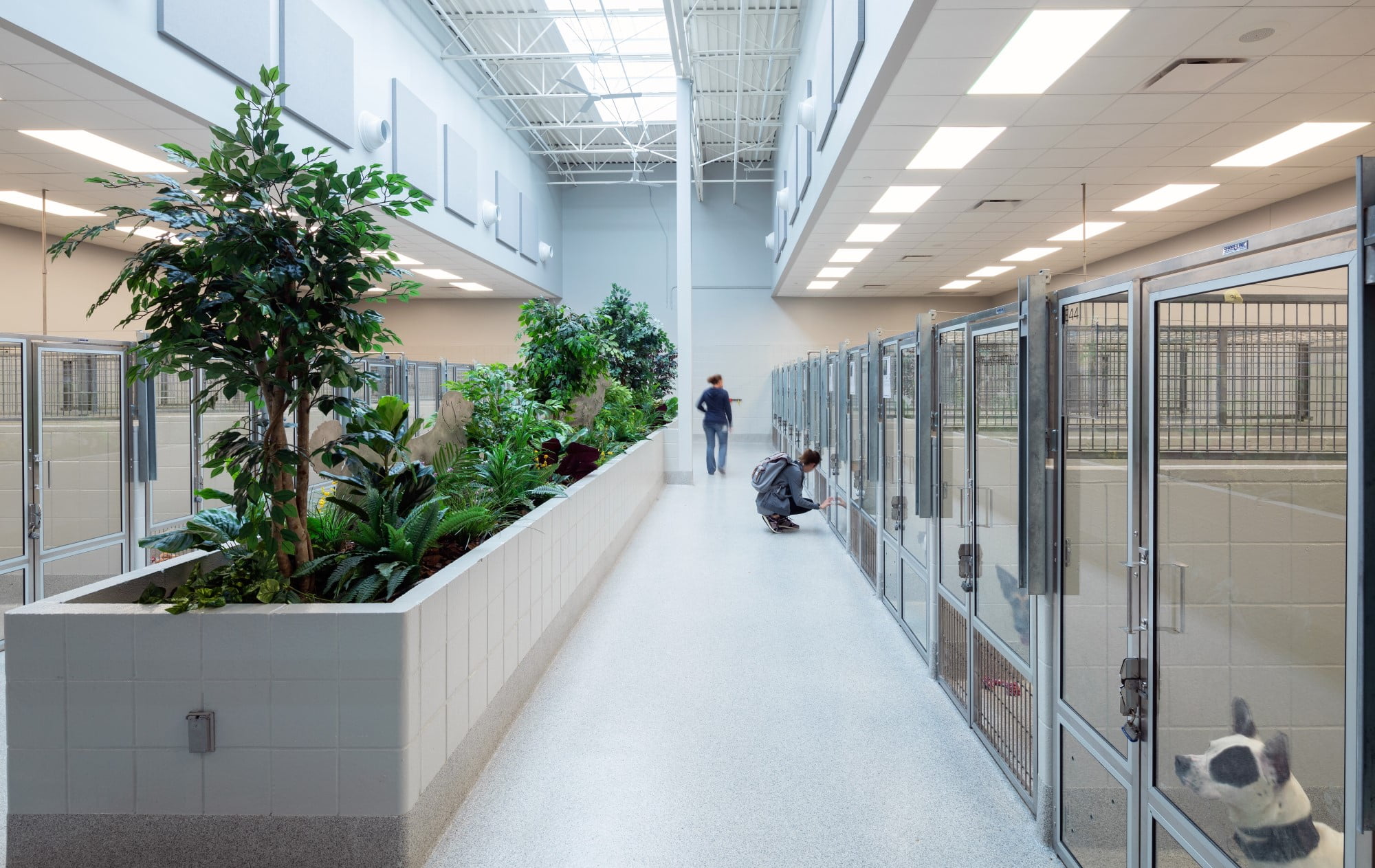Animal sheltering organizations do not often have the opportunity to commit to a major renovation or new building project. So, the decision to start fresh with a new facility or to transform your current space needs to be thoughtfully considered based on a variety of factors, including fundraising capability, site availability, community needs, and animal capacity needs now, and at minimum, a decade into the future.
Understanding your fundraising capacity is a bit of a chicken and egg problem. You cannot properly evaluate fundraising capacity without some analysis of your current and future needs. However, you won’t be able to fully define the scope of the project until you know how much money you can raise. We recommend a needs assessment to understand how much it would cost to design and build the project if you were to undertake a major renovation or potentially build a whole new shelter. With this information, a fundraising feasibility consultant can do his or her work more effectively.
After your consultant returns with an analysis of how much money can be raised, it might be necessary to modify your project costs to align with the fundraising goal. You can do this several ways, including by reducing the scope of your project, potentially by scaling back optional programs; by looking at possibly reusing some of your current space instead of building all new; or by reducing some scope by working with your architect to create flexible spaces that can be used for multiple purposes depending on seasonal and future needs.

This major renovation and addition for the Dumb Friends League shelter in Denver, CO, including a new intake center, state-of-the-art dog housing, and an education pavilion.
It is also important to look at the long-term versus short-term project costs and determine what makes more sense for your organization. For example, upgrading to high-efficiency lighting during a renovation can add a significant cost to the project; however, the return on investment in the first two years can be as high as 45 percent. Choosing the more expensive porcelain tile for your flooring versus a vinyl product will add to your initial investment but will also reduce long-term maintenance costs. All of these choices for materials, fixtures, and mechanical and energy upgrades should be discussed with your design team to ensure that you are making the right choices for your budget, the long-term life of your project, and the animals and people that will inhabit your facility.

The renovation of the Nebraska Humane Society, to create the Judy Varner Adoption and Education Center, included new dog, cat, and small animal housing and spaces for dog training and public education.
One additional consideration is how you will maintain operations during a renovation. An important first step is developing a phasing plan with your architect, so you know where animals will be housed and staff will be working throughout the process. It is also critical to hire the right contractor to ensure that the team considers noise control, works to keeps, staff, animals, and visitors safe at all times, and that utility interruptions are minimized and carefully coordinated.

The new shelter for Mountain Humane Society in Hailey, ID houses a veterinary clinic, a cat café, and Central Bark, an outdoor play space for dogs.
Animal sheltering has come a long way in the past 10 years. We know so much more about how to best care for animals to keep them physically and behaviorally healthy in a shelter environment. If your organization is looking to the future, to create a building that can help support the well-being of the animals in your care and the pets and people within your community, we would love to talk with you about how Animal Arts can help you through the process. We’re happy to talk about HASS community-forward animal sheltering, Fear Free design, ASV standards, increasing veterinary care services, and other ways to integrate the best concepts in the industry into your facility.


